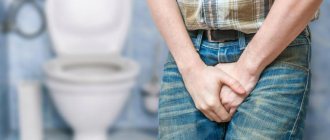Pain under the armpit of a woman (right or left) can be a sign of a variety of pathologies. Most often, this symptom is associated with inflammatory processes in the axillary lymph nodes and sweat glands, as well as with injuries. However, pain can also radiate to the axillary fossa from nearby organs and nerve endings. In this case, diagnosing the pathology becomes much more difficult. What ailments can be accompanied by pain in the armpit? And which doctor should I contact? We will consider these questions in the article.
Causes
The following diseases and conditions can cause armpit pain in women:
- enlargement and inflammation of the lymph nodes;
- inflammatory process and suppuration of sweat glands;
- cyclical hormonal changes in the female body;
- breast neoplasms;
- atheroma;
- herpes zoster;
- allergy;
- muscle injuries.
Only a doctor can establish the exact etiology of the pain syndrome. Therefore, if discomfort occurs in the armpit, you should urgently seek medical help.
Next, we will look in detail at the most common diseases that cause pain under the armpit on the right side.
Pain in the left armpit, muscle strain as a cause
Many of the muscles around the shoulder and armpit can cause pain if a person injures them. People can pull a muscle when they stretch or overexert themselves. People who exercise regularly, especially those who do strength training, may be more likely to experience muscle strains and strains.
In these cases, the pain should subside over time while the person rests and does gentle stretches. If the pain does not go away after about a week, it is best to see a doctor.
Lymphadenopathy
In this condition, there is an increase in lymph nodes. Lymphadenopathy is not an independent disease. This is just one of the symptoms of infectious and inflammatory pathologies. Enlarged lymph nodes are a response of the body's immune system to the penetration of bacteria or viruses.
Normally, the size of the axillary lymph nodes is no more than 1 cm. When they enlarge, pain occurs due to tissue stretching.
Lymphadenopathy may be one of the manifestations of the following diseases:
- flu;
- measles;
- tonsillitis;
- infectious mononucleosis;
- tuberculosis;
- rubella;
- brucellosis;
- felinosis (cat scratch disease).
With these pathologies, swelling of the lymph nodes and pain under the armpit in women appears. Lymphadenopathy during infections is accompanied by the following symptoms:
- increased temperature;
- sweating;
- weakness;
- deterioration in general health.
To get rid of lymphadenopathy, it is necessary to cure the underlying pathology. Patients are prescribed a course of therapy with antibacterial and antiviral drugs. After recovery, the lymph nodes shrink to normal size.
However, there are more dangerous causes of lymphadenopathy. This may be a sign of an oncological process in the lymphatic system: lymphoma, lymphosarcoma, Hodgkin's disease. With these pathologies, the patient experiences a slight but constant increase in body temperature, weakness, causeless weight loss, and an enlarged liver and spleen. These are early signs of cancer. In such cases, you should not hesitate to consult a doctor. For diseases of the lymphatic system, it is necessary to undergo a course of treatment with chemotherapy and radiation therapy.
Also, autoimmune diseases (systemic lupus erythematosus, rheumatoid arthritis) can cause swelling and pain in the lymph node under the armpit. With such pathologies, joint pain and rashes on the face are noted. The diseases are chronic. It is very important to start treatment on time, this will help avoid serious complications on the heart and kidneys. It is necessary to take cytostatics and corticosteroids for life. After achieving remission, pain and swelling of the lymph nodes disappear.
Symptoms of axillary lymphadenitis
The inflammatory process in the regional axillary lymph nodes is isolated and, as a rule, is characterized by a catarrhal or purulent course. Below are the most common clinical pictures of inflammation of the axillary lymph nodes.
- Acute catarrhal form. This inflammatory process is more common than others and often occurs in a mild form. It is characterized by severe pain, enlarged lymph nodes and their hardening. With catarrh, the lymph nodes are easily separated and do not lose their mobility. In the axillary area, hyperemia and mild swelling may develop. The patient may notice worsening of the condition, discomfort during shoulder abduction, and mild low-grade fever.
- Purulent form. This type of inflammatory process poses the greatest danger due to the formation of a purulent focus, which can be represented by single or multiple abscesses. The lymph node itself loses its mobility and becomes painful and swollen. Nearby tissues are sharply hyperemic and may be subject to alteration or melting. Possible fusion of lymph nodes with the skin.
- Chronic course of lymphadenitis. Sluggish inflammatory processes occur quite often, in which the lymph node under the arm becomes inflamed when the immune system is weakened and the body’s resistance to various infectious agents is reduced. Symptoms in this form are mild, the lymph nodes are mobile, but there is slight pain.
Lymphadenitis
With this disease, the lymph node becomes inflamed and suppurates. Pain occurs under the armpits in women when pressing on the affected area. The cause of inflammation is the penetration of infection.
First, a small painful lump appears under the skin. The affected area then turns dark red and feels hot to the touch. The pain syndrome is very pronounced. Subsequently, a white head appears on the inflamed skin. This sign indicates the maturation of the abscess. The abscess usually breaks out on its own, after which the pain disappears and relief occurs.
Lymphadenitis is also accompanied by the following symptoms:
- increased temperature;
- deterioration of general condition;
- chills.
This pathology is treated by a surgeon. Oral antibiotics are prescribed, as well as local antibacterial ointments, which accelerate the breakthrough of the abscess. In severe cases, the inflamed lymph node is opened and drained.
Hidradenitis
Pain under the right armpit in women (as well as under the left) can be a sign of hidradenitis. Popularly this disease is called “bitch udder”. The pathology is similar in its manifestations to lymphadenitis, but with hidradenitis, it is not the lymph node that becomes inflamed, but the sweat glands in the armpit. Most often this disease is caused by staphylococci.
Inflammation develops gradually. First, a slight swelling appears under the armpit, itching and discomfort. Then the skin turns red and a cone-shaped lump appears. This formation is extremely painful. Within 10-15 days, an abscess forms, which subsequently breaks out on its own.
Quite often, not one sweat gland, but several at once, becomes inflamed and suppurated. Multiple painful formations appear under the armpit. Hidradenitis is accompanied by the following additional symptoms:
- high temperature;
- weakness;
- headache.
The patient is prescribed a course of antibiotic therapy. Local treatment with ointments with ichthyol, levomekol and synthomycin is also indicated. In advanced cases, the abscess is opened.
Hidradenitis recurs very often. Therefore, doctors additionally prescribe a course of immunomodulators and vitamins. It is recommended to follow a diet limiting fatty foods, regularly wash the armpits and treat the skin with disinfectants. This will help avoid relapse of inflammation.
Mastalgia
Aching pain in the armpits in women can be associated with hormonal fluctuations during the monthly cycle. This symptom complex is called mastalgia. The pain is periodic. They occur in the second phase of the menstrual cycle, shortly before the onset of menstruation.
The pain is localized in the mammary glands and is noted on both the right and left sides. Unpleasant sensations radiate to the armpit area. Most often they are not pronounced and do not cause any particular inconvenience. However, in some cases the pain can be quite intense.
Mastalgia is accompanied by the following symptoms:
- engorgement of the mammary glands in the second half of the menstrual cycle;
- slight enlargement of the axillary lymph nodes (in rare cases);
- disappearance of pain after the onset of menstruation;
- mood swings (irritability, tearfulness).
This symptom complex is not a pathology. Under the influence of natural hormones, the patient’s mammary glands become engorged and lymph outflow worsens. This leads to pain syndrome.
Mastalgia is observed in many women throughout the reproductive period. This symptom disappears only during menopause. However, if during menopause the patient undergoes a course of hormone replacement therapy, then she may experience cyclical chest pain, radiating to the axillary region.
What to do if you have pain in the armpit before your period? In women, slight discomfort during this period is considered a natural phenomenon. However, if the pain syndrome is severe and disturbs your well-being, then it is necessary to undergo a course of treatment. Patients are prescribed analgesics, drugs with estrogens, and sedatives. Taking diuretics is also indicated, this will help normalize the outflow of lymph. Women suffering from mastalgia are advised to limit their fluid intake.
Angina pectoris as a cause of armpit pain
Angina occurs due to a lack of oxygenated blood flow to the heart. This may be because one of the arteries leading to the heart is narrow or blocked. Angina causes chest pain and discomfort that is sometimes severe. It can also cause pressure and pain in other areas, including:
- axillary
- shoulders
- back
- neck
- jaw
Some people may also experience a feeling similar to an upset stomach. Angina is a symptom of an underlying heart condition, such as coronary artery disease, which can lead to a heart attack.
There are also many other types of angina. Anyone who suspects they have angina should talk to their doctor.
Breast tumors
The cause of pain under the armpit in women can be oncological pathologies of the mammary glands. At an early stage, tumors do not manifest themselves and are asymptomatic. Neoplasms are detected incidentally during a mammogram. The appearance of pain indicates an advanced stage of the disease.
The pain is localized in the mammary glands and radiates to the armpit on the affected side. Unlike mastalgia, the pain syndrome is permanent and is not associated with the monthly cycle. Upon palpation, a dense formation is felt in the chest and in the axillary fossa.
Breast cancer is also accompanied by the following symptoms:
- The nipple becomes retracted, and ulcers and scales can be found on its surface.
- Pathological discharge from the breast appears, not associated with lactation.
- The color of the skin in the area of the affected mammary gland changes. The epidermis becomes uneven and resembles a lemon peel in appearance.
- The breasts appear swollen and deformed.
- The axillary and supraclavicular lymph nodes often become enlarged.
First, a slight aching pain occurs under the armpit on the right or left (depending on the location of the tumor). As the tumor grows, the intensity of the pain syndrome increases. Severe swelling of the axillary fossa appears, which can spread to the upper limb.
Conservative treatment methods are effective only in the earliest stages of the pathology. If the patient experiences severe pain, this usually indicates a significant growth of the tumor. In these cases, treatment for breast cancer can only be surgical.
Pain under the armpit of the left arm in women: signs of benign and malignant tumors
Tumors of a benign and malignant nature often occur in the armpit area. Their appearance is mainly observed in women of reproductive age, as well as after menopause.
Signs of cancer:
- It is worth noting that cancer is usually diagnosed much earlier than any first symptoms appear, that is, nagging pain. Accordingly, after a lump appears under the armpit, it is necessary to carefully examine the breast for the presence of lumps, as well as discharge from the nipple.
- The fact is that with a breast tumor, an inverted nipple and discharge from the nipple area are very often observed, which are in no way related to breastfeeding. That is, any discharge that is yellow or bloody is a reason why you should visit a doctor.
- With breast cancer, an enlargement or change in the shape of the gland is also observed; there may be dents, or, conversely, some bulges of an incomprehensible nature. If you find a lump in the chest or armpit area that does not hurt or bother you, you must consult a therapist to determine the nature of this lump and what it is connected with.
Armpit pain in women
Sebaceous cyst
Pain under the armpit of a woman (on the right or left - it doesn’t matter) can be caused by a sebaceous gland cyst - atheroma. This formation under the skin looks like a ball filled with fatty contents. It is mobile and has clear contours.
The axillary region is rich in sebaceous glands. A cyst is formed as a result of their blockage. This is facilitated by poor hygiene, excessive sweating, excessive consumption of fatty foods and the use of certain medications. Atheroma is a benign neoplasm. But in rare cases, it can develop into a dangerous tumor.
In the initial stages, atheroma is not accompanied by pain and does not cause any particular inconvenience to the patient. However, the cyst easily becomes infected and suppurates. When bacteria penetrate the surface of the neoplasm, a white head forms. Pain under the armpit on the right or left usually appears at the stage of suppuration of atheroma.
The abscess takes a long time to mature and often breaks out on its own. But in such cases, atheroma, as a rule, recurs after some time. Therefore, it is recommended to remove it surgically along with the capsule. Only in this case can you get rid of the cyst completely.
Under no circumstances should you try to squeeze out festering atheroma on your own. At home, it is impossible to completely remove the cyst along with the capsule, but you can very easily introduce an infection into the resulting wound.
Redness of armpits after shaving
Underarm redness is most often caused by shaving, especially in people with sensitive skin or some forms of dermatitis.
Removing armpit hair with a razor is quick and cheap. A razor blade can damage the skin and make it easier for bacteria to enter, which can cause an inflammatory reaction. After shaving, you need to apply a soothing cream or gel to the skin, which relieves inflammation, softens the skin and has an anti-inflammatory effect.
If you don't have cream, you can reduce the redness caused by shaving with an aspirin tablet. It is necessary to dissolve two tablets in a small amount of water to obtain a paste consistency. Then you need to carefully apply it to the irritated areas of the armpits, let it dry, and then rinse with a small amount of water.
Be extremely careful with this and other home remedies. The active ingredient in home remedies is often a drug whose exact concentration is unknown. As a result, numerous skin lesions and irritations can occur.
Razor irritation can be reduced by cooling the affected area with cool water or an ice cube. There are also special sprays with thermal water that have an anti-inflammatory effect and help regenerate the skin.
If you frequently have problems with armpit redness after shaving, you may want to consider other hair removal methods, such as sugar paste waxing or laser hair removal.
If redness on the skin of the armpit is accompanied by pain, palpable lumps with or without a purulent tip, you should consult a doctor. Most often this is inflammation of the hair roots, but it is also possible that it is inflammation of the glandular ducts of the skin. These conditions usually lead to local or systemic antibiotic therapy.
Herpes zoster
Pain on the right under the armpit and in the ribs may be a sign of herpes zoster. This disease affects women who have had chickenpox in the past. The causative agent of the pathology (Herpes zoster virus) remains in the human body forever. Its reactivation leads to the occurrence of herpes zoster.
The virus attacks nerve endings. At the beginning of the disease, aching pain appears under the armpit and in the ribs. Then pink spots form on the skin. After a few days, they turn into bubbles filled with liquid. The patient's temperature rises and her health worsens. The pain intensifies sharply, becomes burning and unbearable.
Patients are prescribed antiviral drugs (Acyclovir, Famvir), as well as painkillers (Diclofenac, Ibuprofen). Antiherpetic ointments (Zovirax, Herpetad, Vivorax) are used to treat skin rashes.
It is important to remember that a patient with shingles can transmit the virus to others through airborne droplets or contact. In an infected person, the disease occurs in the form of chickenpox.
Allergy
Pain under a woman’s armpits (right or left, it doesn’t matter) can be caused by the use of deodorants. Allergic reactions are observed in women with individual intolerance to the components of perfumes.
With allergies, red spots, irritation and itching form on the epidermis. The skin in the armpit area is especially delicate, so rashes are often accompanied by pain. Patients are advised to take oral and local antihistamines. During treatment, you must temporarily stop using deodorants.
Most often, this reaction is caused by deodorants containing zinc and aluminum salts. Allergy sufferers should avoid using such products.
Nerve damage in the armpit
Nerve damage can also cause pain under the armpit. Nerve damage can result from physical trauma, such as from overexertion during sports or from an accident or fall.
Nerve damage can cause:
- pain
- tingling
- insensitivity
Some diseases, such as diabetes, can also lead to nerve damage or neuropathy. The National Institute of Diabetes and Digestive and Kidney Diseases notes that up to half of people with diabetes have peripheral neuropathy, which is nerve damage. While peripheral neuropathy usually affects the feet and legs, it can also affect the hands in some people. Treating diabetes can help slow the progression of nerve damage.
Muscle pain
Nagging pain under the armpit in women can be associated with trauma. The muscles and ligaments in this area are very susceptible to stretching. They can be easily damaged by heavy lifting, sudden movements of the arms, and even by awkward body positions during sleep.
When the axillary muscles and ligaments are sprained, the pain is constant and intensifies with movement and pressure. It is recommended to put as little stress on the injured arm as possible. In the first 3 days, cold compresses are applied to the affected area. In the future, gels and ointments are used to relieve pain and heal tissue (Diclofenac, Lyoton, Voltaren). At the recovery stage, therapeutic exercises and physiotherapy are indicated.
The lymph node under the arm hurts: what to do?
Lymph nodes are the basis of our lymphatic system. This is where the body reacts when an infection enters it. Because in this area, bodies are released that fight directly against infections, as well as viruses. Therefore, inflammation in the lymph node area indicates that some kind of infection has entered the body. Often, a lump in this area appears immediately after you have had an infectious disease.
Most often this can be observed during measles, chickenpox, flu, or a more serious illness of the internal organs. After treatment of the disease, the lymph nodes return to normal. When breast cancer appears, the lymph nodes often become inflamed. Therefore, when women contact a therapist with inflammation of the lymph nodes, they are prescribed a breast examination for the presence of benign and malignant tumors.
Armpit hurts
Treatment of lumps and lymph nodes should be carried out under the supervision of a doctor. The fact is that in this area there are many important areas that are responsible for the functioning of the entire body. Accordingly, after inflammation occurs, an enlarged lymph node or after the formation of a lump, it is necessary to consult a doctor.
Under no circumstances should a hot or warm compress be applied to inflamed areas, boils and bumps. It is also forbidden to warm them with any lamps or apply ointments. Without knowing the cause of the disease, all these measures can worsen the situation and introduce additional infection.
If you experience a lump or pain under the armpit, you should consult a therapist who can determine the cause and refer you to a specialist for further consultation and treatment.
Diagnostics
Which doctor should a woman contact if she has pain under her arm? Whether you feel discomfort on the right or left, it doesn’t matter. In any case, as we found out, such a symptom can indicate many diseases. First you need to visit a therapist. If necessary, the general practitioner will issue a referral to a specialist.
To clarify the etiology of the pain syndrome, the patient may be prescribed the following examinations:
- blood test for pituitary and ovarian hormones;
- tumor marker test;
- MRI;
- x-ray of the humerus;
- mammography;
- Ultrasound of the mammary glands;
- blood test for antibodies to infections;
- Dopplerography of lymphatic vessels;
- biopsy of an enlarged lymph node;
- blood test for immunoglobulin E (if allergies are suspected).
The choice of necessary research methods depends on the intended diagnosis.
Skin infection as a cause of armpit pain
A skin infection under the armpit can cause itching and pain. Bacteria thrive in warm, moist environments such as the armpits. Overgrowth of bacteria in this area can lead to infection, which can cause redness, swelling and pain.
Other forms of infection, such as fungal infections caused by ringworm or yeast, can also cause similar pain and irritation in the area. Mild skin infections should go away without treatment as long as the person keeps the area clean and dry. However, your doctor may recommend antibacterial creams or medications to treat more severe cases.
How to relieve pain
What to do if you have pain under the armpit on the right (or left)? This symptom can be caused by a variety of reasons. Self-medication in this case is unacceptable, because pain can be a sign of dangerous pathologies. It is necessary to visit a doctor, undergo all necessary diagnostic tests and cure the underlying disease. After all, pain always signals trouble in the body.
If the pain syndrome is very severe, then at the pre-medical stage the following measures can be taken:
- Take an anti-inflammatory pain reliever tablet, such as Ibuprofen.
- For injuries, you can apply cold to the armpit.
- If the pain under the arms is caused by irritation of the epidermis, then you can apply Bepanten ointment or Rescuer balm to the inflamed skin. However, such drugs are not recommended for use in case of inflammation of the lymph nodes or sweat glands.
Immediately before visiting a doctor, you should not take large doses of painkillers. This can blur the clinical picture and make diagnosis difficult.
Treatment of lymph nodes
Treatment of lymphadenopathy of the axillary lymph nodes consists of selecting the correct etiotropic and pathogenetic therapy. The main thing is to remember that patients are strictly prohibited from attempting to independently eliminate this manifestation of the inflammatory reaction.
As a rule, all treatment is based on the elimination of the inflammatory focus, which caused the development of axillary lymphadenitis. Often, a course of antibacterial therapy or a number of anti-inflammatory drugs are prescribed for this. In addition, it is advisable to use compresses with Dimexide, immunomodulating drugs and a course of physiotherapeutic procedures, which will contribute to the overall strengthening of the body.
If a malignant process develops with concomitant lymphadenitis, the patient is advised to undergo a course of chemotherapy or surgical treatment.
Prevention
To prevent the occurrence of pain in the armpit, the following recommendations must be followed:
- Use only hypoallergenic hygiene products (soap, deodorants).
- Keep the armpits clean.
- Avoid excessive exposure to heat, as this promotes increased sweating.
- You need to be very careful when shaving armpit hair. Even small cuts and scratches can become a gateway for infection.
- During the second phase of the menstrual cycle, you should not drink large amounts of liquid. This will help avoid mastalgia.
Women over 40 years of age must undergo an annual mammography examination and donate blood for tumor markers. At this age, the risk of breast cancer increases. Regular examination will help prevent the development of dangerous tumors.









